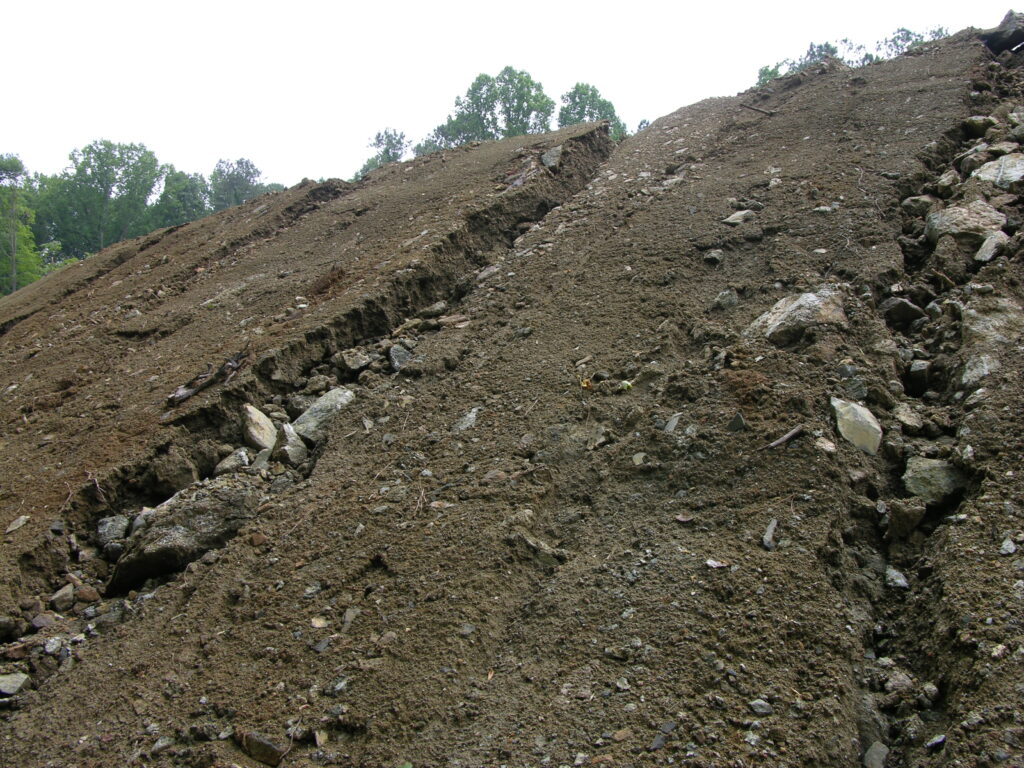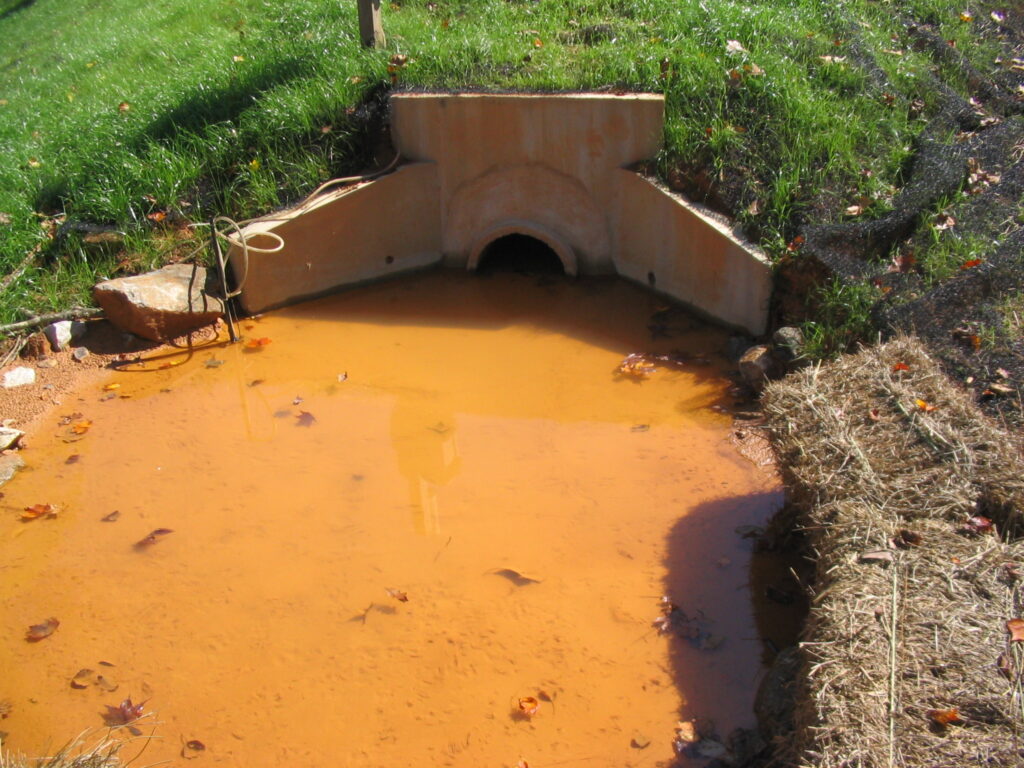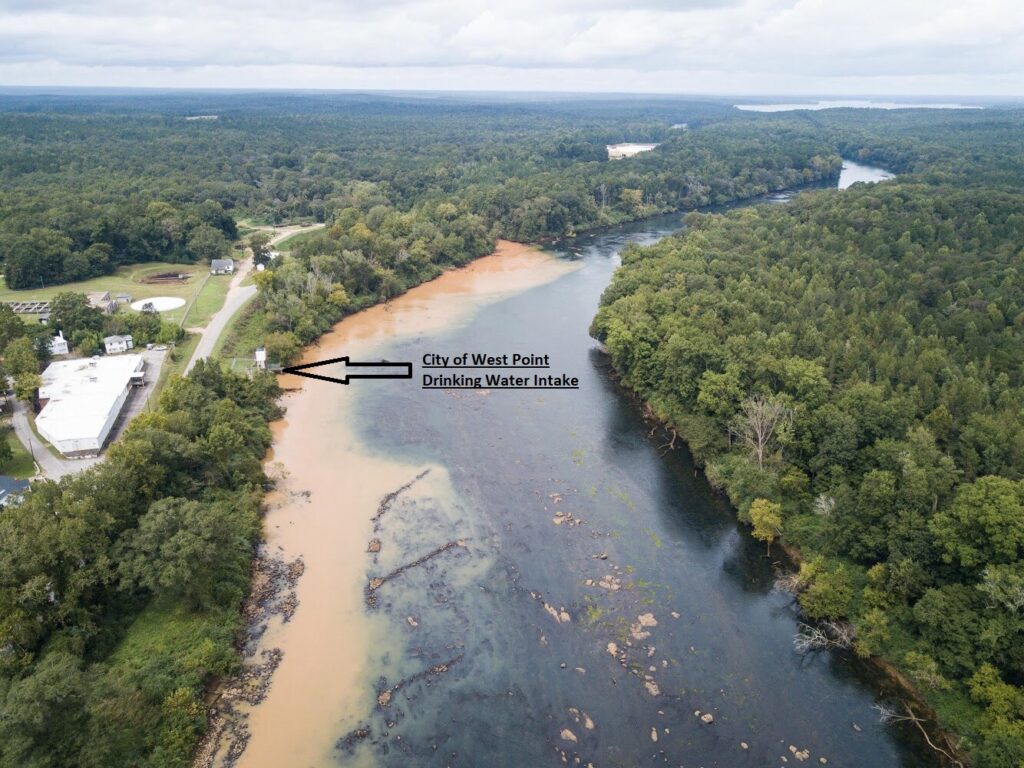Sediment carried by stormwater runoff from construction sites can cause severe water quality degradation in Georgia’s streams and rivers.
What is a watershed?
A watershed is an area of land that drains all of the water running on it to a water body. When soil is eroded and suspended in the water, the resulting muddy water eventually makes its way to the river or stream. Sediment-laden runoff is considered pollution under the Clean Water Act.
What is erosion and sedimentation?
Erosion is the process by which the land surface is worn away, as sediment particles are detached by water, wind, ice, or gravity. This can happen in undisturbed areas, but the rate is generally very small. Erosion is intensified by human activities such as farming and construction. Sedimentation is the process by which eroded sediment is transported and deposited by water wind, ice, or gravity. Sediment that is deposited in rivers and streams is a concern.
Why should we care about sediment in our waterways?
Georgia’s population is growing and because of it, there is an unprecedented construction boom. Since 2010, Georgia’s population has grown by 500,000 people, and mostly in the 15-county metro Atlanta area. Construction in metro Atlanta is only expected to increase – in the next decade, the population is estimated to grow by almost an additional one million people.
Sediment carried by stormwater runoff from construction sites in Georgia has been documented as the leading source of non-point source pollution to rivers throughout the state. This can cause severe water quality degradation in Georgia’s streams and rivers.
Impacts of Excessive Sediment
On Aquatic Life
On Humans & Infastructure
Visit home to explore another page.
Learn how to help identify problems by knowing what to look for.



